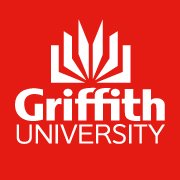Brief description
The project involves the establishment of site-specific listening labs to experiment with hydrophonic recording and sound diffusion to measure aquatic biodiversity. The Logan aspect of this dataset includes sounds recordings from Mt Barney and down through various streams, across multiple agricultural and urban land types.
Full description
Gear;
Aquarian Audio Products H2a-XLR Hydrophone
Burns Electronics Aquaear CR-80-40
Aquarian Hydrophone ZOOM H4n
Preamplifier MixPre-D
Preamplifier Sound Devices 722
Recording method;
The River Listening Synapse residency specifically involves field labs on the identified rivers experimenting with various hydrophonic recording techniques and sound processing. The labs each involve a three-week immersive engagement process, which is based on a methodology developed during my doctoral research. The labs involve three daily recording sessions; sunrise, midday and dusk. Each recording session is approximately two hours, with a custom-made quadrophonic hydrophone rig attached to a moving kayak. These recordings are databased onsite, and made available online for analysis at the Australian Rivers Institute.
In addition to the kayak recordings, other field kits are distributed on location to capture sounds without human intervention. These include a stationary hydrophone that records from the same location during the entire field lab and a series of smaller field kits to capture the soundscapes above the water. The additional field kits are useful to analyse particular sound sources in the hydrophone recordings that might be difficult to identify. The recording sessions are accompanied by community workshops and creative development experiments involving streaming and processing the hydrophone recordings. The team will facilitate a range of community events and will also collaborate with existing programs in each river community.
Notes
Hydrophone sound recordings from the Logan River
Data time period:
Spatial Coverage And Location
text: Whole Logan River system
Subjects
Acoustic ecology |
Bioacoustics |
Biological |
Environmental |
Estuarine |
Freshwater |
Healthy Water Systems |
Hydrophones |
Land Use |
Marine |
Recording |
River listening |
Sound |
Soundscape |
Whole river |
Whole waterbody |
User Contributed Tags
Login to tag this record with meaningful keywords to make it easier to discover


